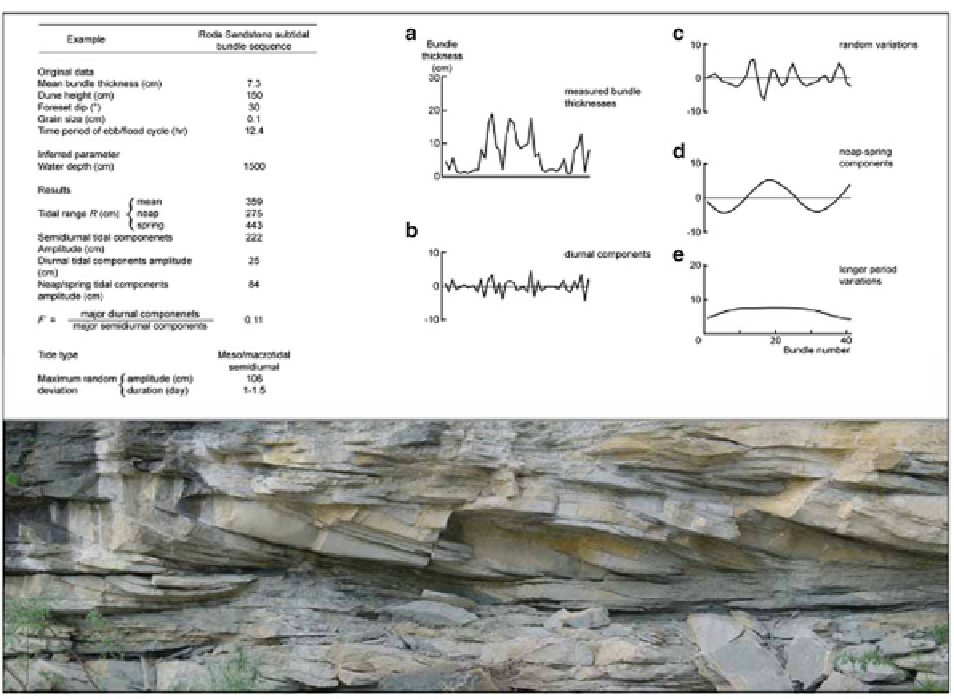Geology Reference
In-Depth Information
Fig. 18.19
Summary of the estimated paleotidal ranges, com-
ponents and maximum random deviations of the tidal bundle
deposits of the Roda Fm (
upper left
). Paleotidal components (
b
),
random variations (
c
) and longer-period variations (
d
,
e
) derived
from fi ltering analysis (
upper right
) (Modifi ed after Yang and
Nio
1985
). The photograph shows the tidal bundles along the
Isábena River, same locality as Fig.
18.18
18.5
Overfi lled Shelf Tidalites - The
Montanyana Group
1975
; Nijman
1998
). The Montanyana system has been
divided into a Lower, Middle and Upper part (van Eden
1970
; Nijman and Nio
1975
; Nijman
1998
; Fig.
18.5
).
Lower delta plain facies of the Lower Montanyana
Group are mapped as the brackish water facies of the
Castigaleu Fm. These are contemporaneous with and
interfi nger with upper delta plain and alluvial facies of
the Montllobat Fm. Equivalent facies of the Upper
Montanyana Group are mapped as the Perrarua and
Capella Fms respectively (Garrido-Megías
1968
;
Nijman and Nio
1975
; Van der Meulen
1989
;
Puigdefàbregas et al.
1989
; Figs.
18.5
and
18.20
). The
Middle Montanyana is an incised fl uvial sheet sand-
stone that prograded rapidly westwards across the basin
(the Castissent Fm; Figs.
18.5
and
18.8
). The
Montanyana system was fed by alluvial fans along the
northern and eastern basin margin (Nijman
1998
) .
18.5.1 Montanyana Group Stratigraphy
and Depositional Environments
(Late Ypresian to Late
Lutetian - 51.5 Ma to43 Ma)
The Montanyana Group (Figs.
18.5
,
18.8
,
18.10
and
18.20
) unconformably overlies shallow marine sedi-
ments of the Ager Group and had a dispersal pattern in
which the main sediment transfer zones moved south-
ward across the basin through time maintaining an E-W
orientation. This was caused by the interplay between
the progressive uplift in the inner parts of the thrust sys-
tem along the northern basin margin and synchronous
growth of transverse alluvial systems (Nijman and Nio

